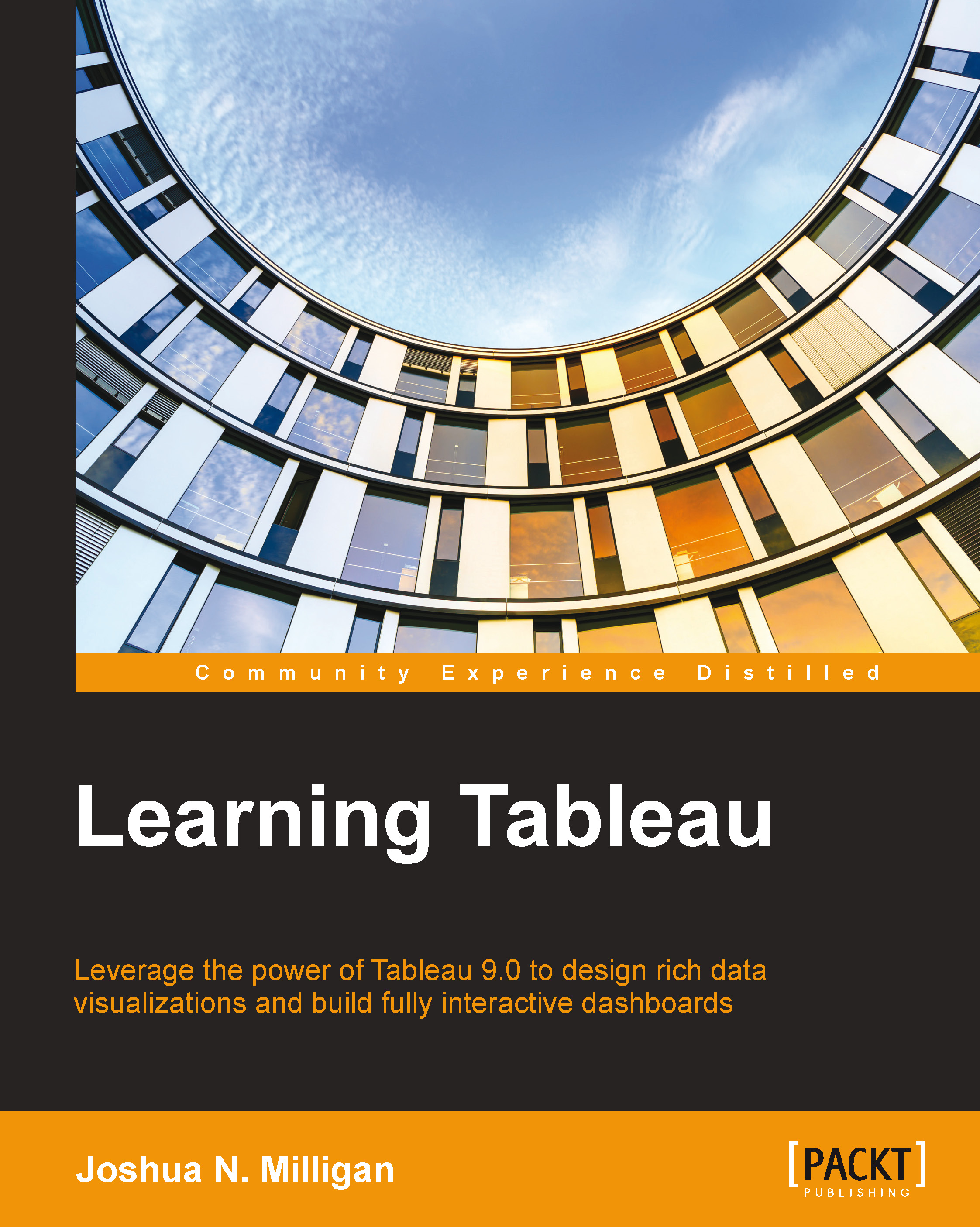-
Book Overview & Buying

-
Table Of Contents

Learning Tableau
By :

Learning Tableau
By:
Overview of this book
 Free Chapter
Free Chapter
 Sign In
Start Free Trial
Sign In
Start Free Trial

 Free Chapter
Free Chapter
Tableau is an amazing data visualization platform! With it, you will be able to achieve incredible data discovery, data analysis, and data storytelling. You will accomplish all of these tasks and goals visually. In fact, Tableau is unique among all other data visualization tools because it uses VizQL, a visual query language. This means you won't write a lot of tedious SQL or MDX or painstakingly work through wizards to select a chart type and then link components together with data.
Instead, you will be interacting with the data in a visual environment and Tableau will automatically translate your actions into the necessary queries behind the scenes. Much of your work will be drag and drop. Tableau empowers you to work with data rapidly and iteratively, switch visualization types on-the-fly, and ask new questions and gain new insight.
This chapter introduces the foundational principals of data visualization in Tableau. You will take on the role of an analyst for a coffee chain. We'll work through a series of examples that will introduce the basics of connecting to data, exploring and analyzing the data visually, and finally, putting it all together in a fully interactive dashboard. These concepts will be developed far more extensively in subsequent chapters. This chapter lays the foundation, including:
